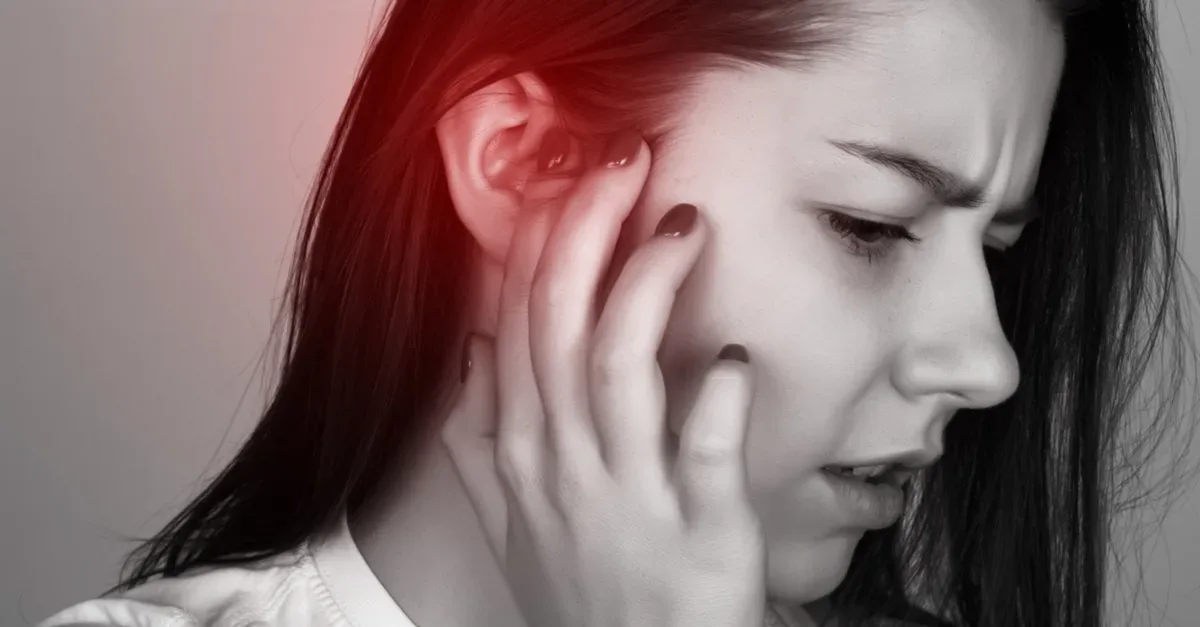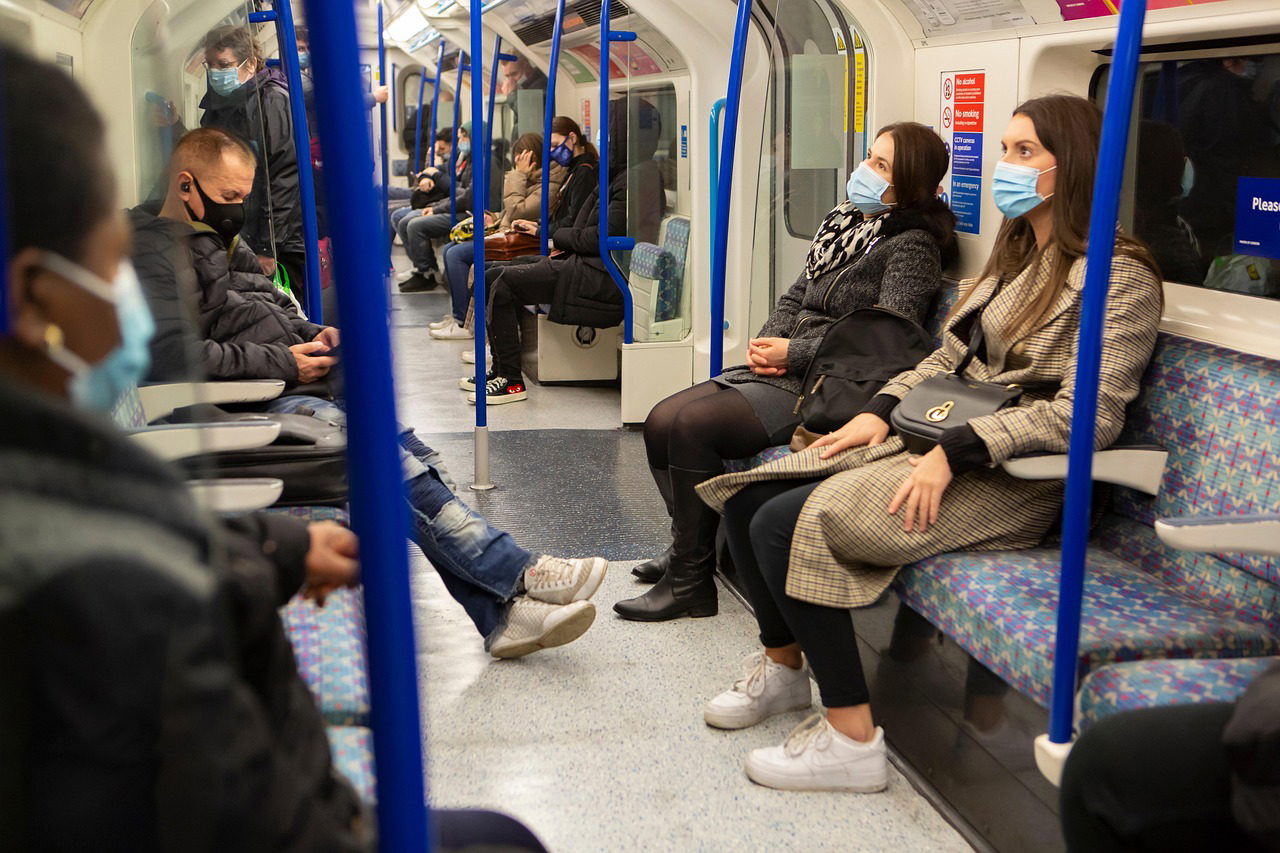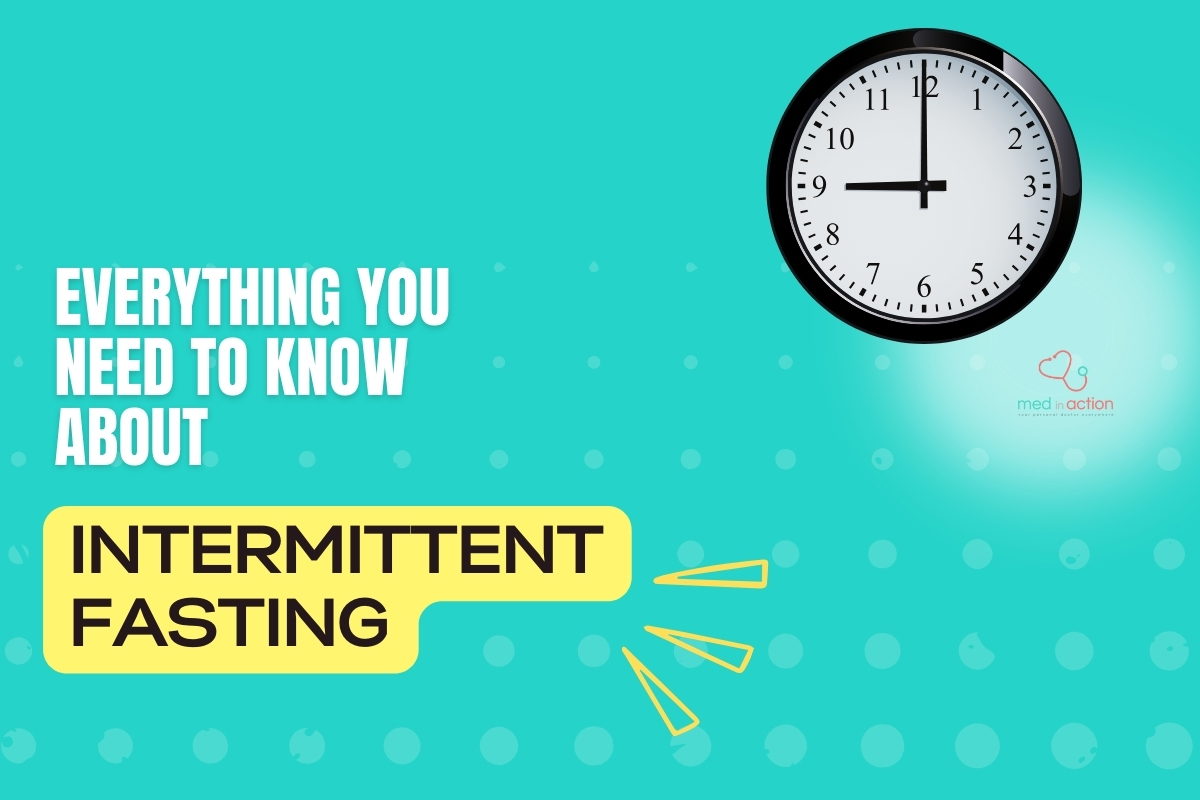ar pain can be tricky since it has a variety of causes, signs and symptoms, and treatments. In most instances, ear pain can be described as sharp, aching, or burning. It can occur in only one ear or both. One of the most important things to remember is never put anything into your ears! If you have a problem or think something is stuck in your ear, please contact MedinAction or your healthcare provider.
Causes of ear pain?
There are many causes of ear pain, both external and internal problems, and it can be difficult to determine the exact issue based on symptoms. Here are some common causes of ear pain:
- Swimmer’s ear, A.K.A. external ear infections (otitis externa)
- This is usually a bacterial infection of the ear canal from getting contaminated water in the external ear. Scratching or having something blocked in the ear are also causes of otitis externa.
- Middle ear infections (otitis media)
- Middle ear infections are usually bacterial or viral infections. These can be from the spread of other infections like the common cold. The difference between external and middle ear infections is the location of the problem. With middle ear infections, the part of the ear behind the eardrum is affected. This is where the three vibrating ear bones are located.
- Otitis media with effusion is not an infection, but there is still the fluid build-up and inflammation in the middle ear like with otitis media.
- Changes in atmospheric pressure
- Barotrauma is damage to the ear from the differences in pressure outside versus inside the eardrum. Most people have experienced this before. It commonly happens when flying, deep-sea diving, and when driving in hilly areas.
- Rupture of the eardrum
- A ruptured, torn, or perforated eardrum occurs when there is a hole in the eardrum, usually leading to hearing problems and ear pain. Eardrums become ruptured from loud noises, pressure changes, and when objects like cotton swabs or fingers are placed in the ear.
- Blockage in the ear from earwax or another object
- Pain from other locations that is felt in your ear (referred pain)
- Problems with your teeth, jaw, throat, or sinuses can lead to ear pain.

What are the signs and symptoms of ear issues?
Children (especially those between 6 months and 2 years old) and adolescents are more likely to get ear infections compared to middle-aged adults. They are also more likely to have perforated eardrums.
Symptoms related to the ear problems discussed above include:
- Ear pain
- Drainage from the ear (this might be yellow, green, include pus or bloody, and/or have an odor)
- Hearing loss
- Ear itching or other discomfort
- Fever
- Hearing “buzzing” or “ringing” sounds
- Dizziness or lightheadedness
- Headache

When should I call a doctor?
If you have ear pain that lasts for more than one day or one of the other symptoms listed in the previous section, you should contact a healthcare provider. Other times when you should seek medical attention include when you have:
- Pain in areas around the ear, including the skull
- Something is stuck in your ear (DO NOT try to get it out by yourself! Have a professional help you!)
- Ear pain that stops very quickly (this is a sign of a perforated eardrum)
- Treatment does not relieve your symptoms
There are multiple complications that may occur if you do not get the underlying cause of your ear pain treated. These include:
- Malignant otitis externa (when the outer ear infection moves to other areas; this especially occurs in the elderly and those with diabetes)
- More severe infections
- Semi-permanent or permanent hearing loss
- Eardrum tears or perforation
- Vertigo, dizziness, or lightheadedness
Treatment of Ear Pain
There are multiple treatments you can try at home in order to reduce ear pain. These include using cold or heat packs, sitting upright versus lying down (staying upright decreases inner ear pressure), and over-the-counter pain relief medications like acetaminophen or ibuprofen. Remember: no aspirin for children!
In addition, common treatments for ear pain caused by air pressure changes include swallowing, chewing, yawning, or sucking on hard candy.
If you go to a healthcare professional, he/she will look in your ears using an otoscope. This device uses light and magnification to get a better view of the ear canal. Your ears, throat, and nose are also likely to be examined.
For swimmer’s ear, your provider will typically prescribe antibiotic ear drops to be used for about two weeks. He/she may also prescribe oral antibiotics or steroids.
For middle ear infections, most doctors will want to use the wait-and-see approach. Without treatment, symptoms commonly get better within a few days and the infection is usually gone between one and two weeks). This approach is recommended by the American Academy of Pediatrics and the American Academy of Family Physicians. If infection is more severe or doesn’t go away, antibiotics may be prescribed. If you have chronic otitis media, you may have surgery to place tubes in the ears (tympanostomy tubes). These help to drain fluid in the middle ear.
For a ruptured eardrum, this condition commonly heals on its own within 8 weeks, but be careful around water and prevent water getting into the ear. If the eardrum does not heal on its own or the rupture is more severe, your healthcare provider may put a patch over the eardrum. You may be awake for this procedure or go under anesthesia.
As a general note, anytime you are given antibiotics, use them as prescribed. Finish the whole prescription and take them at the right times to ensure that the medications are effective and don’t lead to the production of drug-resistant bacteria.
Prevention
Ear pain is clearly unpleasant and, like most things, the easiest way to stop ear pain is preventing it in the first place! Here are some tips for preventing ear issues:
- DO NOT put anything (including cotton swabs and fingers) in your ears.
- Dry your ears when they get wet. Do this after showering, bathing, or swimming. Gently dry outside your ear canal with a towel or lean to one side and then the other to let the water drain out.
- To prevent water from getting in your ear, you can also use earplugs.
- Another way to dry your ears is using a simple mix of one drop of alcohol and one drop of white vinegar. Put one drop of each solution in each ear to decrease the risk of bacteria growth.
- Try to limit getting colds and other infections. Use proper hygiene, wash your hands (the proper way- see below), cough and sneeze into your elbow, and don’t share bottles, cups, or utensils.
- Here is a great resource for the proper way to wash your hands: https://www.mayoclinic.org/healthy-lifestyle/adult-health/in-depth/hand-washing/art-20046253
- Stay away from smoking and pollution.
- If you have a young infant, talk to your doctor. Usually he/she will want you or your partner to breastfeed for at least the infant’s first six months. This increases the child’s immunity.
- Make sure you get your vaccinations! These include the flu and pneumococcal vaccines as well as others your healthcare provider recommends.
- Be careful around loud noises to prevent eardrum rupture.
Now that you’ve learned more about ear pain, answer the question below!
You have just gotten out of the swimming pool and remember that you should dry your ears as a way to prevent infection. How do you accomplish this?
- Stick a cotton swab in your ear and poke around
- Lean to one side, then the other, and wipe the outside of your ears with a towel
- Hit your head really hard to get the water out
- None of the above; it’s actually good to have water sitting in your ear
Answer: B. If you answered this question correctly, great job! If not, go back and look at the article again. You don’t want to stick anything in your ears, hitting your head is never a good idea, and water in your ear can cause infection.




